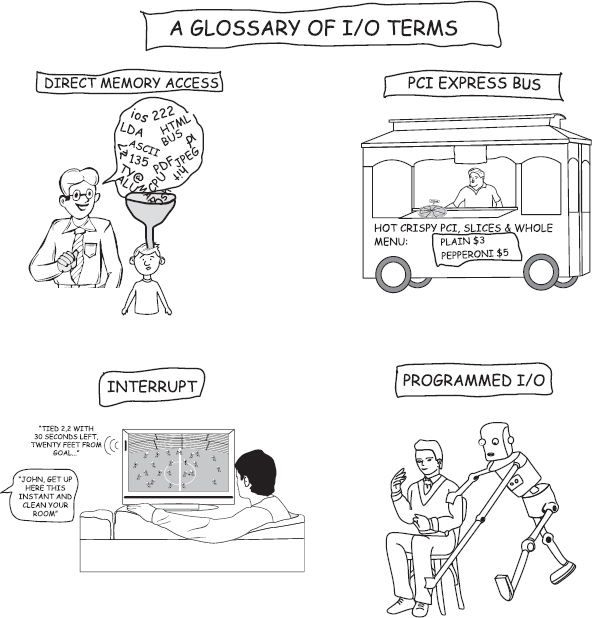CHAPTER 9
INPUT/OUTPUT

Courtesy of Rand Levinger
9.0 INTRODUCTION
Of course you're aware that no matter how powerful the CPU is, a computer system's usefulness ultimately depends on its input and output facilities. Without I/O there is no possibility of keyboard input, of screen output, of printout, or even of disk storage and retrieval. Although you might be inclined to think of I/O in terms of user input and output, there would be no computer network or Internet access either. To the CPU and its programs, all these devices require specialized input and output processing facilities and routines.
In fact, for most business programs and for nearly every multimedia application, I/O is the predominant factor. E-business applications offer an even bigger challenge: Web services generally require massive amounts of fast I/O to handle and process I/O requests as they occur. The speed at which most of these programs operate is determined by the ability of their I/O operations to stay ahead of their processing. With personal computers rapidly increasing in CPU-processing capability, but still somewhat limited in I/O processing, it has been greater I/O capability that has maintained, until recently, the advantage of mainframe computers over PCs for business transaction processing.
We handled input and output in the Little Man Computer by providing input and output baskets for that purpose. ...
Get The Architecture of Computer Hardware, Systems Software, & Networking: An Information Technology Approach, 5th Edition now with the O’Reilly learning platform.
O’Reilly members experience books, live events, courses curated by job role, and more from O’Reilly and nearly 200 top publishers.

